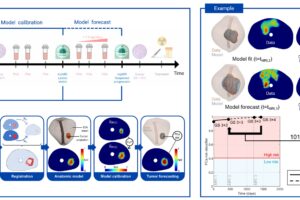
Research by Alexie Kolpak, professor of mechanical engineering at MIT.
Imagine it were possible to remove carbon dioxide (CO2) from a smokestack and turn it into something useful. Alexie Kolpak, a professor of mechanical engineering at MIT, is using the Stampede supercomputer to try to do just that. The new system is enabling her to explore a class of nanomaterials that can capture CO2 from an exhaust stream and convert it into cyclic carbonates, a useful and valuable product for industry.
Texas Unleashes Stampede
The nanomaterial she’s investigating combines a thin film oxide and a ferroelectric substance that changes structure when presented with an electric charge. In one state, it captures CO2; in another state, it releases the CO2 so it can react to form cyclic carbonates. These reactions occur at the atomic level, beyond the reach of even the most powerful microscopes, and can only be investigated through computer simulations.
“The structure at the atomic scale can have a huge impact on the electronic properties and other macroscopic properties of a material,” Kolpak said. “It’s all about the surface.”
Computational experiments on Stampede inspire new ideas for how to manipulate the surface of substances to do important tasks like clean the air or convert sunlight into energy more efficiently than ever before. Kolpak and her collaborators then create and test the materials in the laboratory to see how they perform on real-world applications.
“It’s a really exciting time,” she said. “We’re getting to the point, with the computational speed and the development of algorithms, that we’re looking at a lot more realistic systems, and that’s going to help guide the research that’s going on in the energy areas and in other areas, too.”




